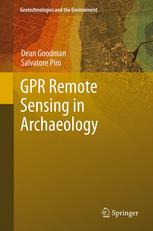

Most ebook files are in PDF format, so you can easily read them using various software such as Foxit Reader or directly on the Google Chrome browser.
Some ebook files are released by publishers in other formats such as .awz, .mobi, .epub, .fb2, etc. You may need to install specific software to read these formats on mobile/PC, such as Calibre.
Please read the tutorial at this link: https://ebookbell.com/faq
We offer FREE conversion to the popular formats you request; however, this may take some time. Therefore, right after payment, please email us, and we will try to provide the service as quickly as possible.
For some exceptional file formats or broken links (if any), please refrain from opening any disputes. Instead, email us first, and we will try to assist within a maximum of 6 hours.
EbookBell Team

4.3
18 reviewsGPR Remote Sensing in Archaeology provides a complete description of the processes needed to take raw GPR data all the way to the construction of subsurface images. The book provides an introduction to the “theory” of GPR by using a simulator that shows how radar profiles across simple model structures look and provides many examples so that the complexity of radar signatures can be understood. It continues with a review of the necessary radargram signal processes needed along with examples. The most comprehensive methodology to construct subsurface images from either coarsely spaced data using interpolation or from dense data from multi-channel equipment and 3D volume generation is presented, advanced imaging solutions such as overlay analysis are introduced, and numerous worldwide site case histories are shown. The authors present their studies in a way that most technical and non-technical users of the equipment will find essentials for implementing in their own subsurface investigations.